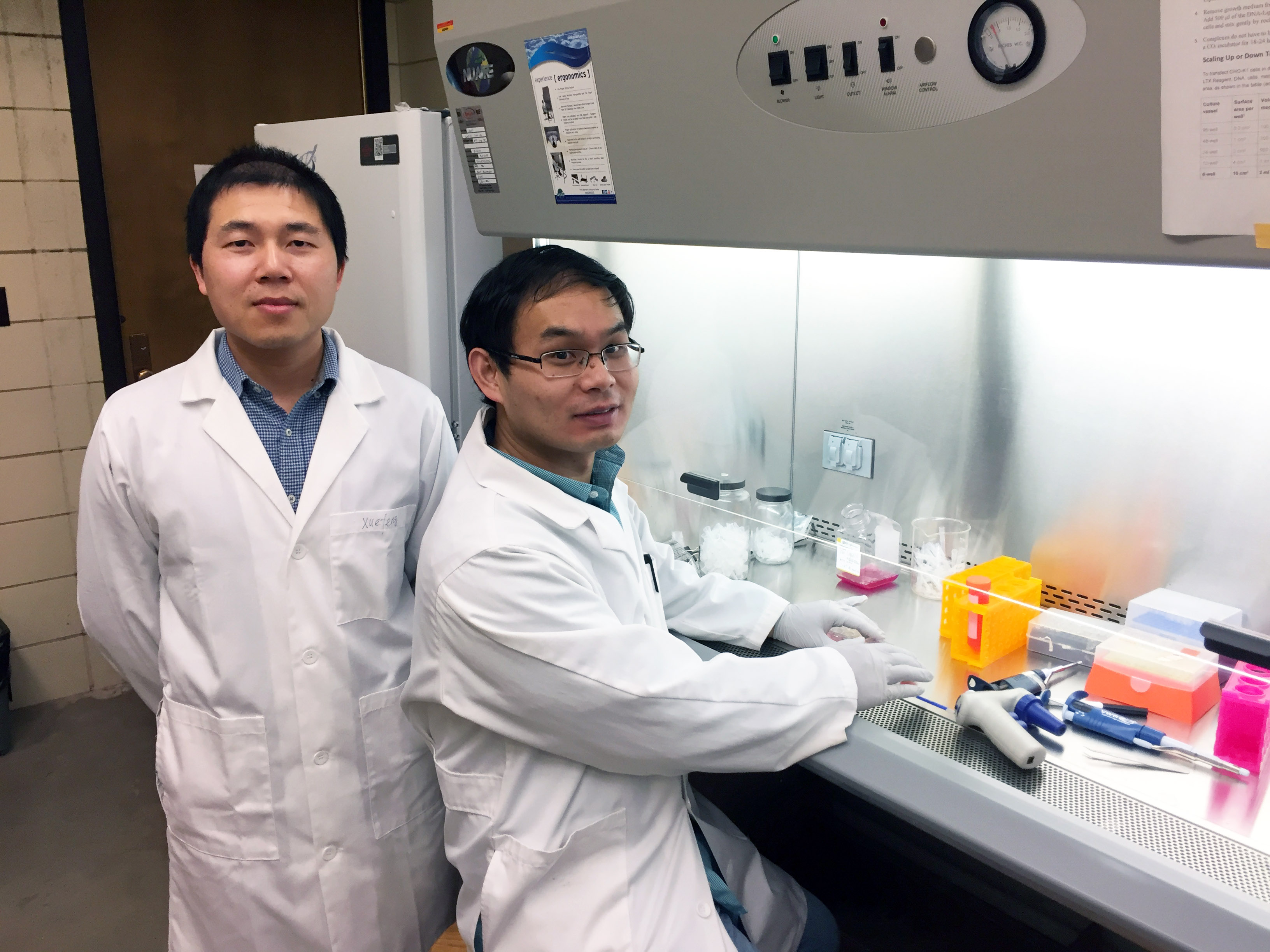
Xuefeng Wang developed a new technique to measure cellular forces smaller than have ever been measured before. The technique could lead to a new medical diagnostic tool.
Wang, an assistant professor of physics and astronomy, studies cell mechanics, the forces that cells create to move or probe and detect their environment. Specifically, he has been studying the forces in platelets, very small blood cells that help blood to clot in order to stop bleeding after a wound.
Platelets are ten times smaller than many common cells and produce forces in the nano-newton range – 1 divided by 1 billion.
Typically, small cellular forces would be measured by placing cells on a very thin, soft surface and measuring the deformation of the surface as the cell exerts a force on it. However, platelet forces are so small, the forces cannot be measured using this method.
Wang’s lab developed a new integrative tension sensor (ITS) that uses fluorescence to measure the force of the cells. Platelets produce force through many thousands of proteins on their surface called integrins. Each integrin, like a tiny hand, can stick onto a surface and exert a force.
Wang’s lab produced a surface that acts like a carpet, with each thread (the ITS) made up of a molecule that emits light when a force is exerted on it. Platelet forces are thus converted to fluorescence and recorded on the ITS carpet.
Using a fluorescence microscope, they can collect a force map from the light emitted by the sensors when forces act on them. The map created by the forces of the tiny platelets has a spatial resolution of 0.2 microns, which is ten times higher than the resolution of conventional force mapping methods.
In active platelets, Wang’s lab found that the force map shows a dipole pattern with concentrated forces on the poles of the cell. Platelets become active in this manner when they contract to form a blood clot.
To carry this research forward, they will work with Dana Levine, assistant professor of veterinary clinical sciences, to test dysfunctional platelets from dogs with bleeding disorders such as thrombocytopenia, when the immune system mistakenly attacks platelets.
"We want to find as many samples from dogs with different diseases as possible and then we will archive the platelet force map around those platelets to see if we can find a correlation of the force intensity and the force pattern with those diseases," Wang said.
The sensor also has potential applications in drug development to test drug effectiveness by evaluating the force map of platelets after treatment with an antiplatelet drug or in testing for bleeding risk before surgeries and other operations by screening platelet function.
Beyond platelet function, the integrative tension sensor can be used to evaluate small forces in other cells, as well, or to study migrating cells or cancer cells.